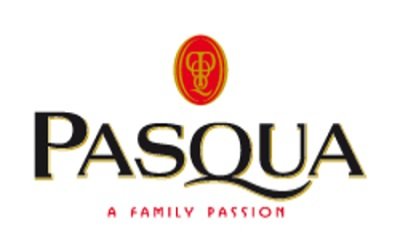The filling of these baked onions is beef and gorgonzola. We pair it with Veneto Bianco Multivintage Hey French, You Could Have Made This But You Didn’t, Edition IV, Pasqua Vigneti e Cantine
Ingredients for 4 persons:
4 large onions; 150 g ground beef; 1 egg; 120 g Gorgonzola Dop; 1 tablespoon vinegar; evo oil; thyme, black pepper and salt
Directions:
Peel the onions and boil them whole in plenty of salted water, with a tablespoon of vinegar, for 40 minutes.
Cut off the top cap and hollow out the inside, leaving the onion “ball” as a container. Chop the pulp and keep it aside.
Meanwhile, cook the ground meat with a tablespoon of evo oil. Season with salt and pepper.
Transfer the meat to a bowl and add the egg, chopped onion, and thyme. Stir. Add 2 ounces of Gorgonzola cheese and continue stirring.
Transfer the onions to a baking dish and fill with the filling. Garnish with the remaining Gorgonzola, a drizzle of oil and black pepper.
Bake in a 200° oven for 20 minutes.
Serve the baked stuffed onions immediately.
 Wine pairing:
Wine pairing:
(Edited by Stefania Vinciguerra)
Hey French, You Could Have Made This But You Didn’t, Veneto Bianco Multivintage, Edition IV, Pasqua Vigneti e Cantine
This wine is a blend of vintages (for this IV edition the 2019 -2016-2021-2020-2018-2017-2013) that are selected as the highest expression of the vineyard throughout its history.
Full golden color. On the nose distinct notes of chamomile, tropical fruits, white flowers and lavender. Then toasty notes reminiscent of dried fruit and white pepper. The palate reveals great body and structure, with good flavor. The blend of different vintages gives the product complexity.
Production area: the Veronese flank of Mount Calvarina, located in the easternmost part of the Soave appellation. This project stems from a four-and-a-half-hectare vineyard that reaches an altitude of 600 meters at its highest part, with southwest exposure, lying on a hill of basaltic-eruptive origin with extensive limestone outcrops. Climatically, the area is favored by its altitude, which ensures cool, breezy summers with wide temperature ranges.
Grape varieties: Garganega predominates with Pinot Blanc and Sauvignon. Cultivation by Guyot (4,500-5,000 vines per hectare) and pergola (3,500 vines per hectare).
Production processes: for each selected vintage, vinification of the white grapes takes place with maceration of the skins for about 10 hours. Alcoholic fermentation is then engaged at low temperatures with selected yeasts, which is followed by partial malolactic fermentation, about 10 percent of the product. The process continues with maturation in second-passage barriques and tonneaux for about 6 months. Finally, the wine is placed in steel tanks for further aging.
Alcohol content: 13% vol.
Serving temperature: 10°C.
Climate notes for various vintages:
The vintages used for this 4th edition are 2019-2016-2021-2020-2018-2017-2013.
2019
It has been quite a rainy year. Spring presented significant differences with a hot dry March and a cold rainy bimonthly April and May. The very hot summer also had two significant heat waves in late June and late July. During the heat wave at the end of June, numerous heat records were recorded, with peaks of 38°C. Nevertheless, the abundant spring rains provided the soils with a good supply of water to withstand a hot and rainfall-free June.
2016
Characterized by heavy rains and not exuberant production, with grapes reaching the average of recent years in terms of sugar and acidity, but with excellent quality characteristics. The analytical framework of the grapes during vinification resulted in a fruity and floral wine.
2021
The spring was very cool and rainy: this slowed down the early phenological stages of the vine and gave an important water supply. The drought that affected much of Italy did not create problems in the Soave area. The summer period experienced non-torrential rains alternating with hot periods, which favored a full ripening of the grapes, which never suffered from the lack of water. Harvest, therefore, of excellent quality although slightly inferior quantitatively.
2020
The year began with a mild winter with little precipitation and then changed in the spring, especially in April and May. The summer months were optimal with no extreme temperatures and perfect water supply.
2018
A year with important implications in the Soave area: slightly above-average temperatures and tropical weather phenomena, with heavy and heavy rains alternating with warm and sunny, though windy, days. Despite the special and complex climatic conditions, it proved particularly favorable and expressive especially for vineyards at higher altitudes, where the effects of hot days were less intense.
2017
One of the most complex of the last 30 years. Low rainfall (even in winter) and high temperatures during the summer greatly influenced the season, giving the wine a strong personality and precise style.
2013
Seasonal trends were characterized by a dry, very cold and prolonged winter followed by a cool and very wet spring with temperatures just below average. Abnormally warm weather at the end of March generated an early sprouting, which fortunately was not followed by spring frosts. An important and useful rainfall phase began in April to mitigate soil water deficits. June, July and August were characterized by almost nonexistent rainfall, which helped maintain an excellent phytosanitary state in the Soave vineyards. September’s rains favored the development of the bunches, which were healthy and in good size, while the significant temperature swings between day and night played to the advantage of the white wines, which were still characterized by very fruity notes.





